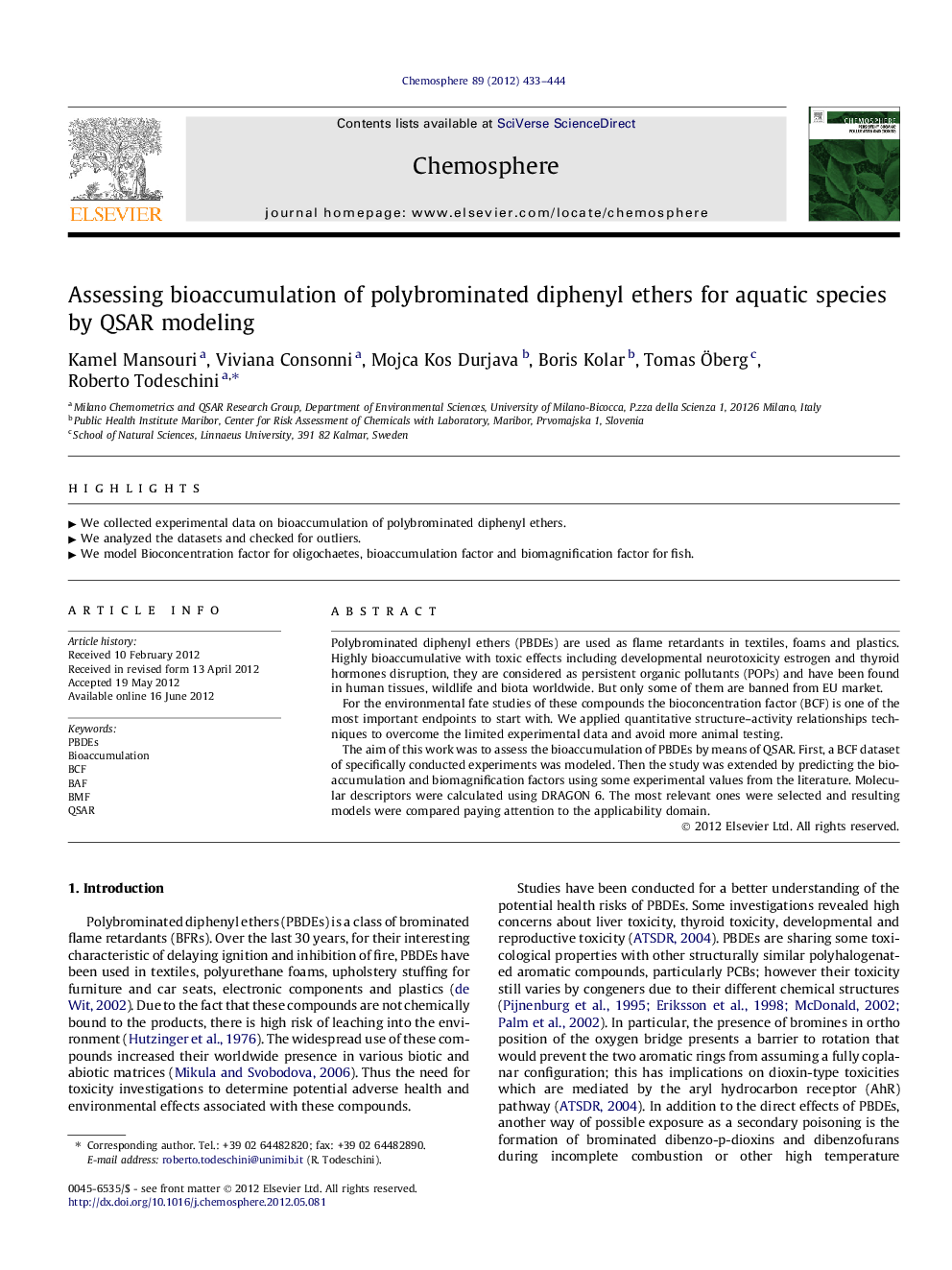| Article ID | Journal | Published Year | Pages | File Type |
|---|---|---|---|---|
| 4409607 | Chemosphere | 2012 | 12 Pages |
Polybrominated diphenyl ethers (PBDEs) are used as flame retardants in textiles, foams and plastics. Highly bioaccumulative with toxic effects including developmental neurotoxicity estrogen and thyroid hormones disruption, they are considered as persistent organic pollutants (POPs) and have been found in human tissues, wildlife and biota worldwide. But only some of them are banned from EU market.For the environmental fate studies of these compounds the bioconcentration factor (BCF) is one of the most important endpoints to start with. We applied quantitative structure–activity relationships techniques to overcome the limited experimental data and avoid more animal testing.The aim of this work was to assess the bioaccumulation of PBDEs by means of QSAR. First, a BCF dataset of specifically conducted experiments was modeled. Then the study was extended by predicting the bioaccumulation and biomagnification factors using some experimental values from the literature. Molecular descriptors were calculated using DRAGON 6. The most relevant ones were selected and resulting models were compared paying attention to the applicability domain.
► We collected experimental data on bioaccumulation of polybrominated diphenyl ethers. ► We analyzed the datasets and checked for outliers. ► We model Bioconcentration factor for oligochaetes, bioaccumulation factor and biomagnification factor for fish.
